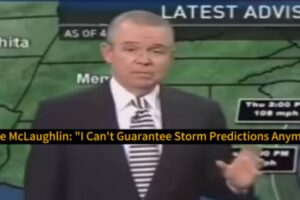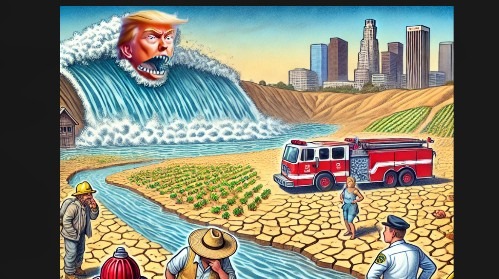In a move that left California’s agricultural sector gasping for answers, the Trump administration recently ordered the release of massive amounts of water from two critical dams, Terminus and Schafer, in Tulare County. This unexpected move has sent farmers scrambling as their reserves, originally meant for the dry summer months, now rush downstream in volumes far exceeding prior levels.
With releases from the Terminus Dam surging from a modest 57 cubic feet per second (cfs) to a torrential 1,500 cfs, and Lake Success discharging water nearly tenfold, the implications are severe. What was initially framed as an emergency measure to combat Southern California wildfires has left many in Central California’s farming community feeling abandoned. Farmers, who have already been grappling with years of drought and stringent water restrictions, now face an uncertain future as they watch their most precious resource slip away.
Politics vs. Practicality: The Real Cost of a Photo Op?
At the heart of this water release debacle lies a deeper political clash between federal and state water policies. President Trump’s directive was framed as a necessary step to ensure adequate water supply for firefighting efforts in Los Angeles. However, critics argue that the move was more about optics than operational efficiency.
Trump himself took to social media to celebrate the event, sharing an image of the released water with a triumphant caption. But as climate scientist Peter Gleick pointed out, this water, which was essential for farmers and communities, is now effectively wasted. “This water will not be captured, will not be useful for cities or farms or firefighting,” Gleick lamented. The broader question remains: was this a well-thought-out policy decision, or just another high-profile media stunt?
Environmentalists vs. Agriculturists: The Eternal Tug-of-War
California’s water politics have long been contentious, with environmental groups and farmers locked in a perpetual battle over resource allocation. Trump has frequently criticized California’s water management, arguing that too much water is redirected to protect endangered species like the Delta smelt, rather than being funneled into the Central Valley for agricultural use.
However, environmentalists counter that diverting water from natural ecosystems in favor of farming can have catastrophic consequences. The impact of these sudden releases could disrupt delicate aquatic habitats and further threaten endangered species, exacerbating an already precarious ecological balance. Meanwhile, state officials worry that increasing agricultural water use without considering long-term conservation strategies could lead to even worse shortages down the line.
Local Authorities Sound the Alarm: Who Owns the Water?
While the federal government may control the reservoirs, local water authorities insist that the water itself belongs to the people who depend on it. Kaweah River Watermaster Victor Hernandez was blunt in his assessment: “Every drop belongs to someone.” His sentiments were echoed by local officials who believe the sudden water release is a blatant disregard for the realities of California’s complex water distribution system.
The logistical nightmare of moving this water from Tulare County to Los Angeles was another glaring issue. Reports suggest that significant pumping and costly infrastructure would be required to make this transfer feasible. In essence, much of the released water may not even reach its intended destination, rendering the entire operation counterproductive.
A Dangerous Precedent for Future Water Policy
As the dust—or rather, the water—settles, this decision raises serious concerns about future federal intervention in California’s water management. The rushed nature of the order, without thorough consultation from local water experts or state authorities, sets a troubling precedent. If political agendas continue to dictate resource distribution without consideration for regional realities, the consequences could be dire.
For now, California’s farmers are left to pick up the pieces, reworking their irrigation plans and bracing for another dry summer with significantly depleted reserves. The larger debate over how best to balance California’s water needs—between agriculture, environmental conservation, and emergency preparedness—will undoubtedly continue, but for those on the ground, the damage has already been done.














